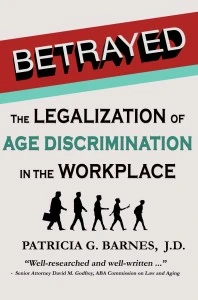
My interest in workplace bullying began about five years ago when I moved across the country with my then 14-year-old son to take a job at a non-profit organization that works in the national arena of intimate partner abuse.
I quickly discovered that my new employer had a bullying management structure, which led to a succession of lives interrupted by trauma, a revolving door of needless turnover, and a colossal waste of resources that should have gone toward halting domestic violence.
Managers used abusive tactics that were similar to those used by perpetrators of intimate partner abuse – emotional abuse,coercion, threats, harassment, withholding of information, humiliation, sabotage, isolation, etc. Workplace bullying involves the misuse of supervisory privilege to exert improper power and control over the target.
One of the first things I did upon leaving this awful place was to write an article for The Domestic Violence Report., a national publication devoted to legal developments and research in domestic violence law and prevention.
I posed a question in the article that I don’t think was asked before, at least in a domestic violence circles. What happens after batterers leave their homes and go to work? Do they suddenly become respectful of others and treat their subordinates and co-workers fairly and with dignity? I argued that abuse is a spectrum that includes workplace bullying, as well as intimate partner, child and elder abuse.
I am pleased to note that an updated version of that article has been reprinted in the most recent issue of the Family & Intimate Partner Violence Quarterly, edited by Mo Therese Hannah, Ph.D. The Quarterly is a journal devoted to bringing professionals in the field a practical focus on the best new ideas for preventing, prosecuting, and treating family and intimate partner abuse.
The Domestic Violence Report, a publication of the National Civic Institute, was then edited by Joan Zorza, J.D., a true pioneer in the area of domestic violence. (My former boss had prohibited me from using citations to Ms. Zorza’s many groundbreaking books and articles because she had the temerity to criticize my boss and the organization in the past.)
In just five years, there’s been an explosion of interest in the topic of workplace bullying and abuse. Most Human Resource officials today are at least aware of the problem and many workplaces have adopted general policies prohibiting bullying. However, there has been virtually no movement toward a real solution to the problem – a federal law or regulations protecting targets of a hostile workplace environment caused by workplace bullying . Sign the petition!
Another thing I learned at my former workplace is that bullies are not always just individuals. Employers also can be bullies. The organization for years misclassified administrative employees as “exempt” under the Fair Labor Standards Act. These mostly young women with children were forced to work endless hours at out-of-state conferences without receiving overtime pay or even compensatory time off. After I left the organization, one of them apparently complained and the organization was forced to repay at least those who still worked there back wages.






